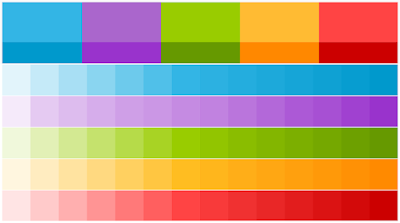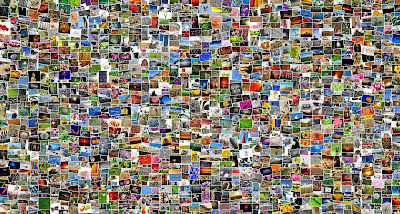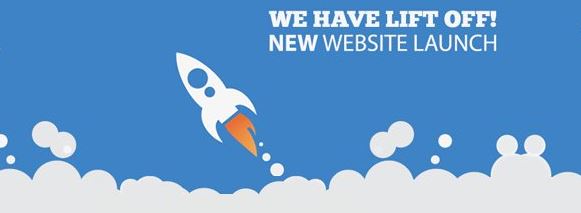 |
| English is not the only language out there, so why only design a website with one language in mind |
It’s amazing when you think about.
However, with such a connection comes the problem of language barriers. While you might be writing your content in English, statistics show that only 20% of the entire world population actually speaks the language, meaning your website is relatively inaccessible to the remaining 80%, which equates to around 6.6 billion people.
So, to counter this issue, you’ll want to design and build your next website as a multilingual platform that’s accessible to people around the world, or at least your target market. But how you do go about doing this? What problems and milestones will you need to overcome and what features does your website need to include?
To get you off on the right foot, here’s a complete guide to everything you need to know.
Getting Started
To start with, the first thing you’re going to want to consider is not actually the building of your website, but the content itself. You’re going to need to get it translated. Of course, translation services, such as Google Translate, are constantly improving and are updated or a near-daily basis.However, these services definitely aren’t reliable if you’re looking for a professional finish. Ideally, you’re going to want to hire a human translator to edit and convert your content properly. For this, you have multiple options available.
Firstly, you could use translating companies such as International Translating or Big Assignments to translate your content for you on your behalf. This is of course if you have the budget. If you’re translating hundreds of pages of content, this can prove quite expensive, and you’ll need to find another way, perhaps by hiring someone long-term, such as a freelance translator from Upwork or Ukwritings.
If this is the case, or you plan on translating your content yourself, you’ll need to remember to proofread your content for errors, so your website remains professional. According to recent statistic, 59% of people said that they won't trust the company of service which has errors and mistakes on their website. So proofreading and editing is vital for your business reputation.
Implement Language Change Features
Of course, no multilingual website would be complete without the ability to actually change the language that the viewer wants to read your website in. Most commonly, you’ll notice that a lot of websites use a traditional drop-down menu which is clearly visible in the header or footer of the website.In theory, you can put it wherever you want, but you want to make sure it’s clear and easy to see as soon as your website loads as people accessing your website will want to change it straight away.
Another key element to consider at this point is adding flag images to your drop-down menu. While this is a graphically powerful element to include, there are a few problems that come with this approach. Most notably is the fact that flags represent countries, not languages and many countries will have more than one official language.
Finally, you’re going to want to make sure that you refer to each language in its own language form, for easier identification purposes. For example, German should be referred to as ‘Deutsch’, French as Français, and Spanish as Español.
Checking Your Readability
 |
| You may not speak multiple languages but you can still create a multi language website with the right tools |
While you may invest a lot of time in choosing fonts for your website and you’ve chosen one that looks clear and precise for your English readers, it’s important to make sure that the font will still be as legible when it comes to another language.
Sarah Stanford, a translator for Paper Fellows shares...
“One of the biggest problems that trip up multilingual websites up is choosing a fine and relatively small font that went translated, the symbols that appear in certain languages, such as the ‘n’ in ‘Español’ can become unreadable”
To alleviate this problem, be sure to check your character encoding, typically found in the head of your page. If your website is using Unicode, UTF-8 may work perfectly since it supports multiple languages, helping them to maintain their readability.
Reading Line for Line
One of the most common misconceptions that people have regarding other languages is the fact that languages don’t have a reading direction. However, the script in which the language is written in does. For example, Arabic script is read from right to left (RTL) whereas English and other European languages are left to right (LTR).Of course, the vast majority of languages do read LTR, but if you include language settings for those who read RTL, this is something you’re going to need to consider. To achieve this easily, you simply need to mirror your website pages, which includes everything.
This means your menu bars, your icons, the layout of your navigation menu, the buttons and even the scrollbars will all need to be flipped and mirror what they are usually. Fortunately, there are a number of ways you can do this using basic code which can be found online, depending on what code you’re using to build your website.
Customising Your URL
Another important factor you’ll want to consider is the URL that your website is using when it changes the language. A country code top-level domain, more commonly referred to as ccTLD, are all linked to specific countries. For example, .fr is France and .es is for Spain.This is such a vital part of the process that you’ll need to remember to complete since this is how search engines will help users to find the content they’re looking for. If you don’t implement it, users won’t be able to find your website easier. Of course, this will eat into your budget, but the ROI is worth it in the long run.
For more information on using ccTLD, as well as for your sub-domains and sub-directories, check out this Google guide on the matter.
Creating a Multilingual Store
If you’re creating a blog with content, this point may not concern you, but if you’re creating a multilingual website that sells products, this is very important as there are a few aspects you’ll want to consider.Firstly, are all the products that you’re selling on your store available in all the countries you’re trying to sell in? If not, you’ll need to find a way to make certain products only available in a certain language, but of course, this solely depends on what framework and store platform you’re using.
Tom Dewis, SEO-expert at Ox Essays shares,
What you have to consider is the currency options that are available to your customers. The cost and price tag of each product will need to be converted automatically in regard to the language that is selected, or using a clearly placed drop-down menu where users can choose their preferred currency.
Finally, you’ll want to consider your posting and delivery options. For example, if you’re not going to be able to sell products in France, you need to make this clear in your terms and conditions.
Consider the Details
This is one point that will solely depend on the content of your website and blog, but it’s definitely worth bearing in mind throughout the entire building process. Many cultures will have a different outlook on certain subjects in life, for example, sense of humor, sexuality, gender equality and symbolism.When translating your content, be sure that you won’t offend anybody’s beliefs with the content you’re posting to avoid it becoming a problem in the future.
What’s more, if you’re using Captchas on your website, have you investing time in making sure the Captchas are in each language rather than just in English? The same if you’re adding citations to your website for this process, be sure to use tools like Cite It In to make sure they’re correct.
Finalising Your Content
Now that your website is nearing completion regarding the multilingual side of things, you’ll need to invest time in finalising your content to ensure that it’s perfect for release. The first thing you’ll want to do is to make sure that all your content has been translated properly.One simple way to do this is using a tool for Easy Word Count. Using this tool, you can copy and paste in your original content and then your translated content and then refer to the word count. If the word counts are roughly the same, give or take a few words, you’ll know that nothing has been missed during the translation process.
Secondly, you’re going to want to check your translated content to make sure that it doesn’t breach any plagiarism requirements. While your original content may not be plagiarised, your translated copy might be. However, this is easy to check using plagiarism checking services like Academized or Plagium.
Conclusion
In reality, there is a tonne of features and aspects of your website you’ll need to consider when designing and building a multilingual website, but this will solely depend on the kind of website you’re building, its purpose and the industry that you’re operating in.However, this article has covered the majority of the basics that you’ll need to consider and should give you the best shot at creating a successful multilingual website.




































